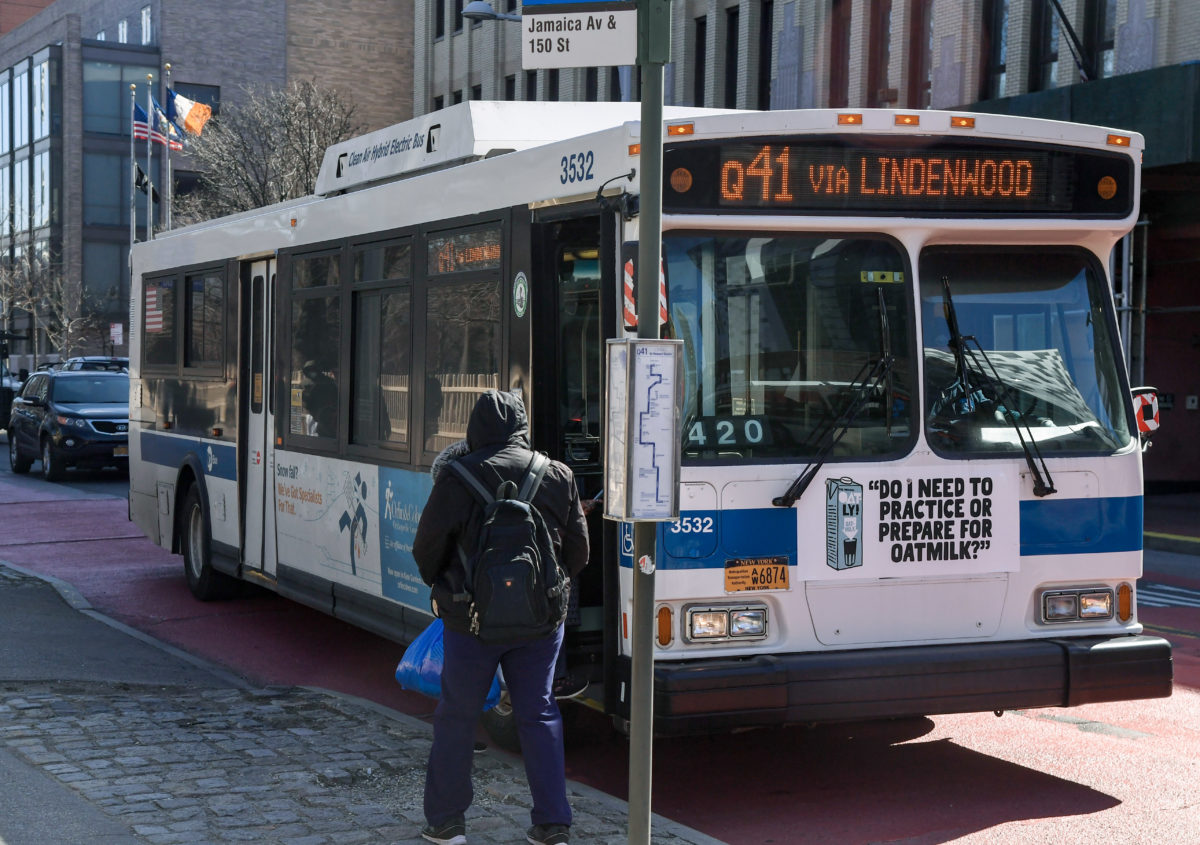MTA releases Queens Bus Network Redesign draft plan
The Metropolitan Transportation Authority rolled out its new Queens Bus Network Redesign draft plan, after receiving over 11,000 public comments on their initial attempt to redesign the bus network in 2019.
As a result of the COVID-19 pandemic, the brakes were put on the initiative in March 2020. Now, the MTA is ready to start back up again with a fresh perspective after the agency received an “unprecedented number of comments” about the original draft plan released in December 2019.
The MTA says its focus is now on routing, bus stop locations, and providing frequent and reliable bus service throughout the borough. In 2019, the bus network served nearly 800,000 average weekday riders with over 100 routes.
“The Queens New Draft Plan is the third to be released, but in some ways, may be the most important of the five because Queens has, historically, had less subway service relative to its size and population than the other boroughs,” MTA Chair and CEO Janno Lieber said. “So many people depend on buses for access to jobs, education, culture and everything else New York has to offer. The New Draft Plan reimagines both local and express service to address the evolving needs of Queens communities, with a focus on more reliable service, faster travel, better connections, and ease of use.”

MTA Chair & CEO Janno Lieber, Interim NYCT President Craig Cipriano, Acting MTA Bus President/SVP NYCT Buses Frank Annicaro, DOT Commissioner Ydanis Rodriguez, and Queens Borough President Donovan Richards announce the Queens Bus Network Redesign Draft Plan at Jamaica Av. & 150th St. on Tuesday, Mar. 29, 2022. (Marc A. Hermann / MTA)
With over half of Queens residents relying on public transportation for their daily commute, at least 11 percent commute primarily by bus, the MTA says. Although ridership dropped significantly during the pandemic — to roughly 46 percent of pre-pandemic levels — ridership is slowly continuing to recover as New Yorkers return to work and their daily activities.
More direct routes in congested areas, like downtown Flushing and Jamaica, are in the pipeline for the redesign. The MTA says a contributing factor to congestion in Flushing and Jamaica are the result of bus routes that end in those neighborhoods.
The MTA is also placing a priority on creating a more efficient bus system by removing and adjusting closely-spaced bus stops along routes in hopes of expediting service. The MTA says with seconds shaved off of existing bus routes, there is a “positive cascading effect” on overall travel times with fewer bus stops.
A total of 85 bus routes (up from 82 currently) are proposed for the local bus network, which can be broken down into four different route types, including 35 local routes, 27 rush routes, 16 limited routes and seven crosstown Select-Bus Service routes.
The MTA will also continue its work with the city’s Department of Transportation to build upon its achievements of dedicated bus lanes, like the ones that were installed last year in Jamaica.
DOT Commissioner Ydanis Rodriguez lent his support to the bus network redesign plan, calling efficient bus service a top priority for commuters from Queens.
“The majority of Queens residents rely on public transportation for their commutes and making sure their buses are running on time and unobstructed has been one of our top priorities,” said NYC Department of Transportation Commissioner Ydanis Rodriguez. “We strongly support the holistic efforts of the borough bus network redesigns to improve bus service, through simplified routings, improved access to important destinations, and improved bus stop spacing.”
In its latest redesign draft plan, the MTA says they are looking into more direct routing and finding new connections to subway stations and other bus routes. New bus routes may have less stops, but this is countered with a proposed frequency increase and fewer route variations or branches.
For example, the proposed Q46 bus route would only serve LIJ Hospital, while the proposed Q48 bus route would only serve Glen Oaks.
Proposed changes to the Express Bus Network include one new express route, serving southeast Queens from Springfield Gardens and Rochdale to Midtown Manhattan. The MTA is also proposing to discontinue the QM3 line that runs between Little Neck and Midtown Manhattan due to low ridership, as well as to retire the QM10 and QM40 lines in order for more direct routes (the proposed QM11, QM12 and QM42 lines) to take their place.
In an effort to gather feedback from locals, the MTA is holding virtual workshops that start on Monday, April 18 for local Community Boards. All workshops will be held from 6:30 p.m. to 8:30 p.m.
Community Board 1 (Astoria, Long Island City and Woodside) will be the first virtual workshop held on Monday, April 18, with the rest to follow.





